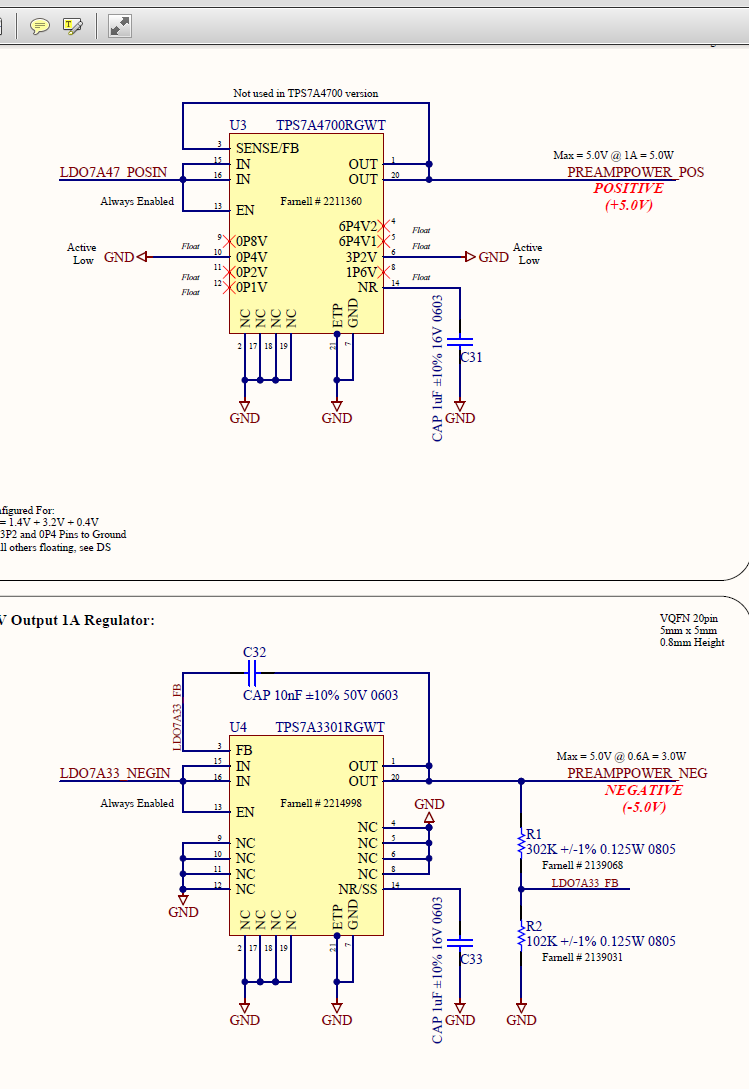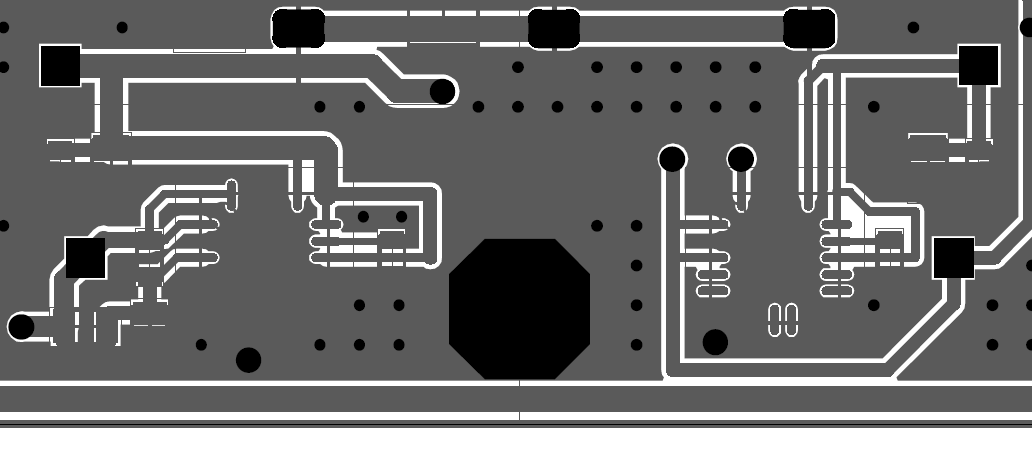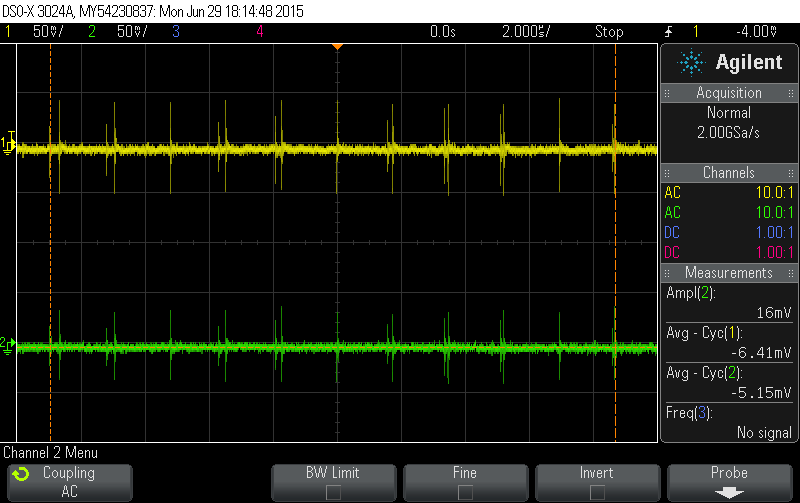Hi All.
We are using the TPS7A33 in a VQFN package as per figure 28 in the TPS7A33 data sheet. All pins buzz out correctly, no erroneous shorts to ground.
Vin is -6.53V and En is tied to Vin so also -6.53V. The soldering seems fine, and a stencil was used for solder paste. The bare PCB is also correct as per the schematic.
However, the TPS7A33 just sits at 0V or something small like 0.1V. I wouldn't have thought it was a bad device as this has happened to both TPS7A33 and TPS7A47 regulators on the PCB and with 2 populated PCBs.
Any help would be much appreciated.
Thanks.
Ed





